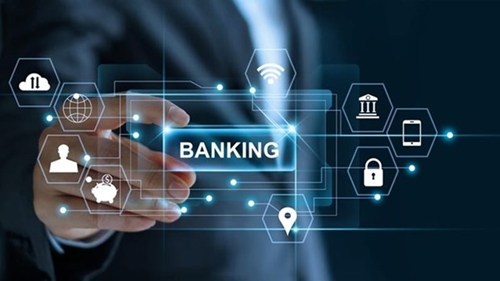According to the State Bank of Vietnam (SBV), the banking sector has invested over 15 trillion VND (617.6 million USD) in digital transformation by the end of 2022.
The country maintained a 40% growth rate in digital payments in the last four years, making it one of the world's fastest-growing economies in banking digital transformation.
    |
 |
|
Banking sector promotes digital transformation to improve the customer experience. (Photo for illustration: tapchitaichinh.vn) |
At least 96% of Vietnamese banks have devised plans for digital transformation and 92% have developed internet and mobile application services, the SBV said.
The Vietnam Bank for Agriculture and Rural Development (Agribank), for instance, is one of the banks that take the lead in piloting new technologies and business models to improve customer experience based on a breakthrough digital banking ecosystem.
Determining that digital transformation is a key task, Agribank has spent a lot of resources in the development and application of information technology systems. Notably, in 2022, the bank deployed Agribank Digital, which is fully equipped with the functions of a transaction office such as identification, online account opening, registration for electronic banking services and financial transactions using biometrics.
Vu Thanh Trung, Director of Digital Bank at Military Bank (MB), said that the bank has implemented a digital transformation strategy since 2018 through strategic cooperation with the U.S.’s IBM Technology Group.
As a pioneer in the deployment of "self-serving" and "all-in-one-app" trends, MB's products aim at creating convenience and flexibility for individuals and businesses, he said, adding the bank spends about 50 million USD on digital transformation each year on average.
The number of transactions on digital channels reached 1.6 billion by the end of October, of which the MBBank App alone recorded 20 million transactions a day.
MB’s pre-tax profit topped 21.9 trillion VND in the first ten months of 2023, up 10% over the same period last year and equivalent to 84% of the year’s target.
Surveys conducted by some consulting firms such as McKinsey and BCG pointed out that more than 70% of digital transformation projects fall short of their goals.
According to SBV Deputy Governor Pham Tien Dung, the banking industry has been facing several challenges, including those relating to synchronization and standardization of technical infrastructure, which aim to facilitate interconnection and integration between the industry and other sectors to form a digital ecosystem, providing multi-utility services to customers.
Therefore, all SBV’s plans on digital transformation set forth tasks and solutions relating to research and deployment of centralized infrastructure which allows data connection, exploitation and sharing with the National Population Database and those of other industries to verify information, classify, and evaluate customers.
The SBV has regularly reviewed and completed the legal corridor to create favorable conditions for data connection and exploitation, and technology application to promote digital transformation on the basis of ensuring security, safety and confidentiality in banking activities, he said.
He went on to say that in the coming time, the SBV will continue to proactively coordinate with stakeholders to effectively deploy solutions under the cashless payment project for the 2021-2025 period. It will also work with the digital transformation plan and Project 06 of the banking industry, which focuses on perfecting the legal framework to promote digital transformation, including policies on data connection and exploitation.
Source: VNA